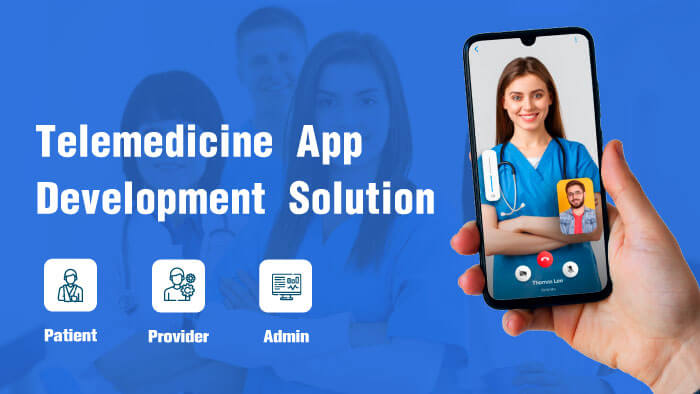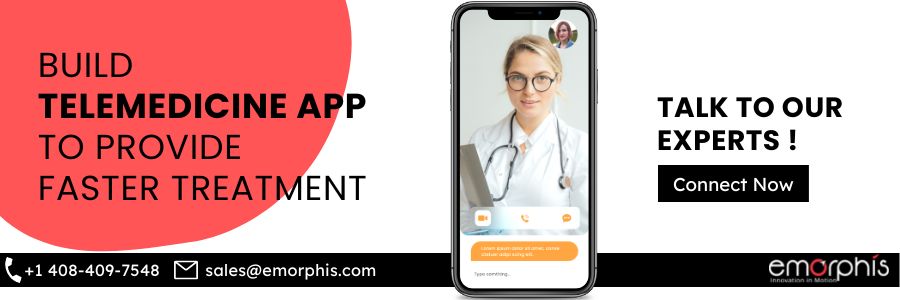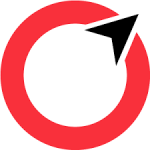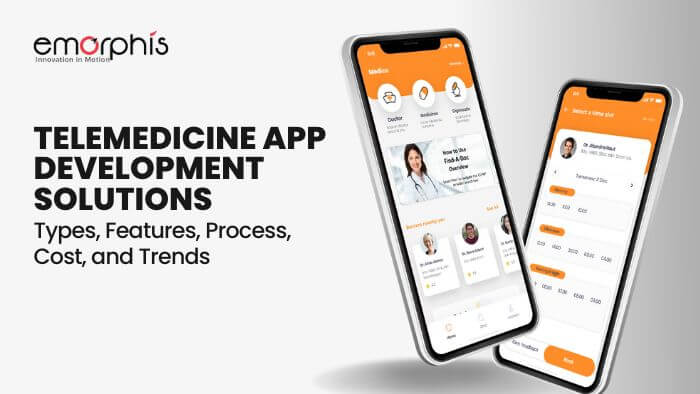About how the pandemic pushed innovation and digitalization in healthcare, much has been written. The Telemedicine app development solutions played a critical role. It assisted the patients and healthcare providers in connecting and receiving the necessary care. Though Telemedicine was there even before the pandemic, it only reached a small population, especially in mental health services.
What is Telemedicine?
Providing patients with quality & cost-effective care; remotely, using technology.
The two healthcare app solutions, telemedicine, and telehealth both are interconnected. Telemedicine is the use of technology to deliver distant care, whereas telehealth is the technology tool and services to provide that distance care.
Among all the innovative healthcare software development and mhealth solutions, Telemedicine software development has shown the highest significance.
A report by Allied Market Research states that the Telemedicine market is projected to reach $431.82 billion by 2030, which was $40.20 Billion US dollars in 2020, registering a CAGR of 25.9% from 2021 to 2030.
The mHealth intelligence report of 2019 stated that 88% of healthcare providers had already invested in telehealth app development or remote patient monitoring solutions. These numbers indicate that a healthcare provider needs to invest in developing a Telemedicine app. As a healthcare provider, you need to keep up with the market, and the best is to make Telemedicine app development an integral part of your healthcare system.
Before we get to the Telemedicine app development, let us first understand the types of telemedicine app development solutions.
Types of Telemedicine App Development Solutions
Real-time Telemedicine (Live-video conferencing)
It is one of the best and most used telemedicine apps, which makes it convenient for doctors & patients to communicate over video conferencing and phone consultations. It allows the caregiver and patient to communicate in real-time, thereby saving treatment costs and time.
Store -and- Forward Apps (Asynchronous video Telemedicine)
It is used by radiology, pathology, and other departments to acquire & transmit medical information. This does not involve real-time video. Still, it stores patient medical data such as medical imaging, test results, bio-signals, etc, that can be shared across distances. The best part of these telemedicine apps is that they do not require simultaneous involvement of patient & caregiver.
Mobile Health or mHealth
The best way to define mHealth apps is the health tracking apps and devices that allow you to monitor health using mobile and wearable devices. mHealth apps have been a game-changer in managing chronic diseases as they track outbreaks and screen patients on time.
Remote Patient monitoring apps
Remote patient monitoring apps allow the healthcare giver to monitor patient medical data from a distance and save the patient travel time to visit the facility. It also allows the patient to receive from their home instead of hospitalization. Remote patient monitoring apps are a boon to patients with chronic conditions such as asthma and heart disease. Through the apps, the patient can share primary medical data whenever there is the earliest sign of trouble and can receive immediate attention & care.
Medical Imaging
This is one major breakthrough in telemedicine apps. Previously, the x-rays and ct-scan reports had to be carried along. But now with Telemedicine medical imaging. The scans & reports are transferred from one medical professional to other specialists. Due to medical imaging, all the reports & scans are at a centralized location for the medical professionals to collaborate & take action on them.

Features of Telemedicine Apps
As the idea of Telemedicine states, it is technology beneficial for both patients and doctors. Though there are no restrictions to adding or implementing multiple features in telemedicine apps, here we enlist some of the popular functionalities.
Features of Telemedicine for Doctors
- Health provider/ doctor registration and profile creation: The doctor had to sign up and create a profile with all the details such as specialty, education, certifications, experience, etc. The more information is available, the more trust it gives patients. The more a patient is aware of his doctor, the easier they can trust the treatment.
- Scheduling appointments: As the doctors manage a considerable workload and can have multiple patients to look after, the telemedicine apps provide the functionality to manage work schedules and appointments to be available for the patients. A doctor can reject or approve any patient appointment request and suggest a reschedule.
- Access to Health Records: Telemedicine apps allow registered doctors to examine the electronic copies of patient histories and medical charts for better treatment. Doctors can also provide e-prescriptions based on the symptoms & medical records. They can have an EHR and EMR integration which helps in getting the complete records on the go.
- Remote health monitoring: As all the patient details are available on the app with tracking & e-prescription, it is convenient for the doctor to keep tabs on patients and their health. The apps also allow instant analytics where the doctor can access the latest data from a patient.
- Video/audio recordings: Telemedicine apps allow doctors to review previous discussions & treatment with patients or staff. All the data is combined in an analytical dashboard which gives a clear visual of the patient progress.
- Integration with pharmacies: The telemedicine app feature doctors that quickly check the availability of medicines. With the pharmacy and writing prescriptions is made easier. Along with this the app also has an integrated billing system to track and receive payment for services rendered.
Features of Telemedicine for Patients
- Patient signup: Like the doctors must sign up and provide their service details, the patients must register on the telemedicine app. It may sound easy, but patient records are sensitive data. Hence, the patient should always register with a two-factor authentication instead of using options like registering via social media or email.
- Connect with a specialist: As easy as it may sound, connecting/finding a doctor or nurse is challenging. But thanks to telemedicine apps, the patients can filter the physicians/doctors by specialization, ratings, proximity, service charges, and a lot more.
- Virtual assistant: One of the critical features of telemedicine apps for patients is to receive tailored suggestions through remote monitoring. Many apps allow patients to record consultations to revisit them in case they forget essential points. Text & Chats are another part of virtual assistance where the patients can exchange details over chat and get treatment, saving time for both entities.
- Appointment scheduling : Patients can easily book appointments with doctors and add them to their calendars. The app prompts a notification to the patient & doctor for the appointment booking schedule. If they want to reschedule or the doctor rejects the appointment, the patient can check the doctor’s schedule and book accordingly.
- Prescription tracking : Through the app, the patient can ensure the medicine is taken regularly. Timely reminders with the medicine name and time come as a notification on the app.

Process/Steps of Telemedicine App Development
We now know the essential features of a telemedicine app and how it is a perfect blend of medical care with convenience and mobility. But for the successful development of Telemedicine apps, it is vital to follow the appropriate process. Let us take you step-by-step through the process:
Step-1: Gather requirements
Before you jump to the idea of building a telemedicine app for your healthcare facility, ensure you know the business goal this app will fulfill. Is it just a communication app or an informatory app or you are looking for a full-fledged healthcare assistance app. Perform market research, understand your target audience and try to match it with your app idea. Once you are through with the research, you can detail the scope of work about how your telemedicine app should work for patients & doctors.
Step-2: Establish features
Based on your scope of work, you can prepare a concrete list of must-have features for both the users (patient & doctor). {You can refer to the feature list mentioned above}.
Step-3: Technical requirements & Cost of Telemedicine app development
Now you know the exact features you need in the telemedicine app and now is the time to look for an experienced Telemedicine app development company/vendor that can guide you on the tech stack- software or hardware requirements and talent needs for your telemedicine app. If you are struggling in finding the best vendors for Telemedicine app development, Emorphis can assist you with the same.
Stage 4: Telemedicine App Development
The expert Telemedicine app development company like Emorphis, start the development by providing mock-ups and wireframes. As a vendor, we keep you in the process throughout the UX design and backend development by sharing regular progress on each level.
Stage-5: Testing and Deployment
As Telemedicine apps involve a massive amount of sensitive data, we ensure that the app is free from vulnerabilities and is secure & reliable. Emorphis is well aware of the healthcare compliances such as HIPAA and HL7; hence, we ensure that the developed application fully complies with these standards. Once we know we are through all the development processes, it is time to launch your app by submitting it to the app stores.
You should know that an app, in the end, is software that needs updates & support. Hence, you should look for a Telemedicine app development specialist like Emorphis, who can stay put to the upcoming developments & updates.
Cost of Developing a Telemedicine App
The price of developing a telemedicine app ranges from $50,000 to $200,000. The cost is influenced by a variety of elements. It includes the application’s kind, complexity, team make-up, technical proficiency, and location. When a developer works full-time on it, the average cost of developing an app is about $100 per hour.
The price of developing a telemedicine app varies substantially depending on a number of variables. The location of your business is the first consideration. You might be able to save money by hiring local developers. If your business is situated in a region with a significant concentration of tech expertise. Because they are familiar with your culture and sector, it might also be simpler for them to comprehend your needs.
The kind of application you plan to develop also affects how much it will cost. The complexity of the functionality required by a given app will determine how long it takes to develop and how much it costs.
The size of your team will also affect how much it costs to develop an app because bigger teams typically have more experience working together on projects and can finish tasks more quickly than smaller teams can do so individually without any overlap between each other’s efforts, which means less wasted time waiting for someone else before moving onto something else.
So it Costs…
A basic app often consists of a patient app and a doctor app. Also, the price of this type will range from $50,000 to $80,000 based on the aforementioned parameters.
Your development expenditures might be between $150k and $250k if you decide to create a comprehensive, feature-rich telemedicine app. Telemedicine app development solutions also can take anywhere from 3 months to 12 months on average. As a matter of fact, depending on its level of sophistication and the features it offers
Today, telemedicine is used in prisons, schools, and even private homes. As a matter of fact, it helps access to medical care. This is without needing a patient to leave their home or place of employment.
If you’re considering creating an app for your clinic or hospital, there are a number of factors that will affect the price, including:
- How many of the hospital’s doctors will have access to the app?
- How many additional patients require access?
- What sort of integration is necessary?
- How many features must-have cross-functionality?
Trending Technologies in Telemedicine App Development Solutions
Let’s conclude the blog with some of the trending technologies in the Telemedicine space.
- The Internet of Things (IoT): When it comes to monitoring chronic care, IoT has been at the forefront. Innovative devices such as medical kiosks, smartwatches, etc. contribute to tracking and diagnosing individuals’ vitals, treatment suggestions, medication adherence through push notifications, built-in emergency response systems, and whatnot.
- AI Chatbots: In telemedicine Artificial Intelligence as used for chatbots. It is used for pre-programmed features. It has FAQs loaded on them, and several responses to user queries. Chatbots are the best examples of automated processes that assist in appointment scheduling and consultation detailing.
- Machine Learning/ AR-VR: Healthcare is an industry that requires quick analytics for better decision-making. As a matter of fact, this is where machine learning-powered platforms assist in providing a personalized healthcare services experience. AR/VR is highly used in medical imaging. Also, medical education as they ensure higher accuracy of treatment & diagnosis.
- Big-Data: As Telemedicine works on the transmission of a huge amount of sensitive data such as medical reports, statistics, imaging, records, etc, it is essential to have secured big-data analytics tools to improve the accuracy of diagnosis.
At Emorphis Technologies, we have gained the richest expertise in Healthcare software solutions and Telemedicine app development given our years of development experience in the healthcare domain. If you are looking to find a trusted Telemedicine app development partner, connect with us! Now you know the essentials to look for when planning for a Telemedicine app for your healthcare facility.
Check some frequently asked questions (FAQs) related to telemedicine app development solutions.







